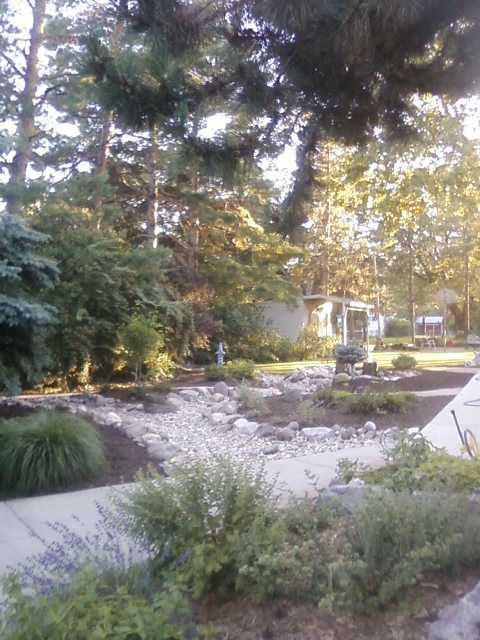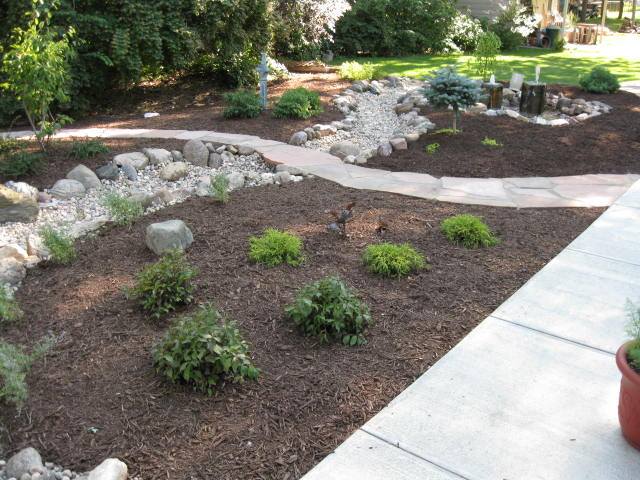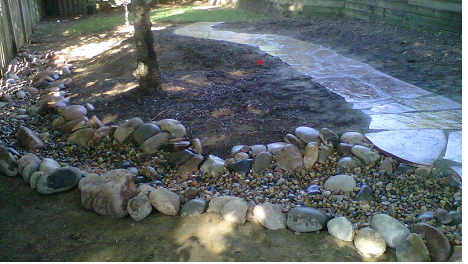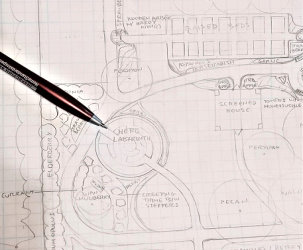Dry creek beds are a creative way to make water beautiful, instead of destructive.
Dry creek beds are often used to control the water flow on your property, moving water away from your house or wet spots in your yard.
The use of either rain gardens and/or dry creek beds are some of the best way to solve issues with wet areas, erosion, and many other water problems. Dry creek beds are a great way to prevent erosion and move water away from problem areas.
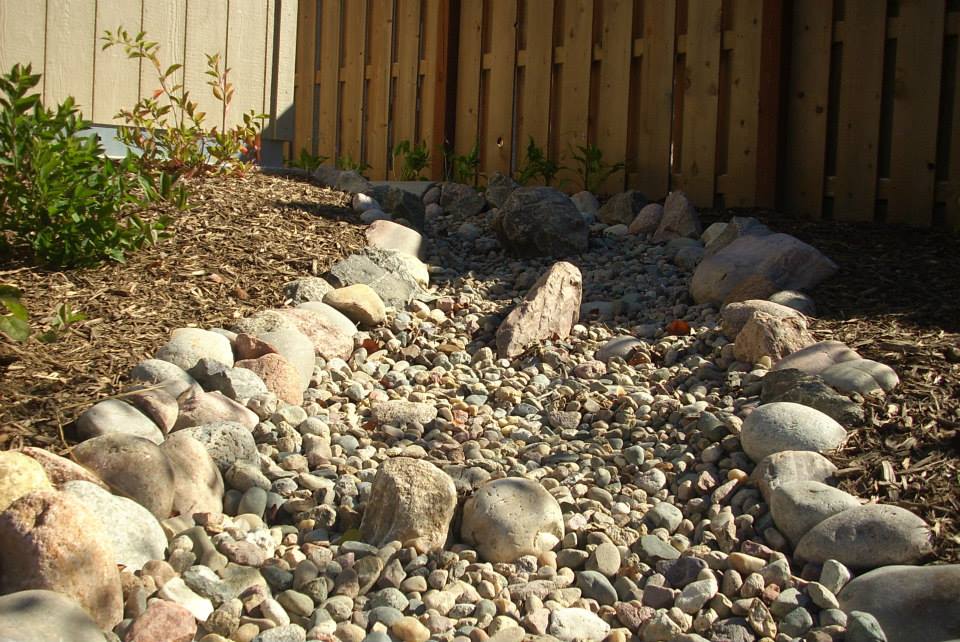
Water can be the most destructive force your home faces. Keeping water draining away from your foundation, and preventing it from sitting or eroding other areas of your property is the absolutely most important landscaping you can do. Whether you have a serious water problem, or just want to enhance the drainage of your garden, dry creek beds can be very useful. Any time you can keep your water draining above ground, your drainage will be much easier to maintain and keep functioning. If you need to get water to run away from an area that it is sitting in, if you are having an issue with erosion, or even if you are just having the mulch wash out of your beds too frequently, a dry creek bed is an inexpensive option that can help solve the problem. Dee-sign can install dry creek beds to be not only highly functional, but also beautiful. While some drainage issues need a more involved draining system, a dry creek bed can almost always be used. We can use them together with the re-grading of a property and/or french drains or other underground drainage systems. Often, we can use them alone to protect your property from water damage.
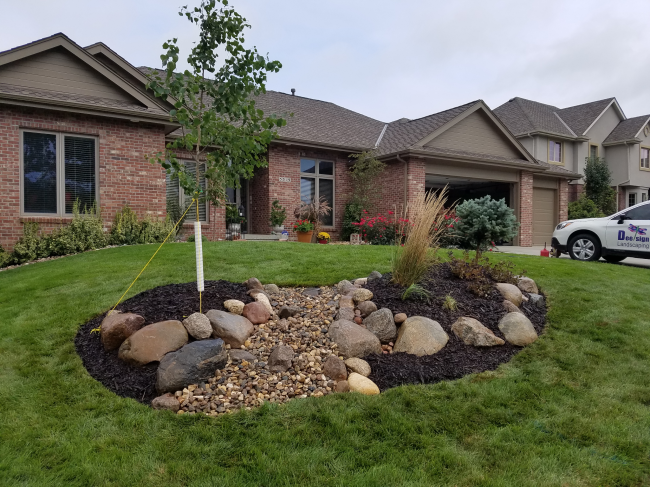
By using a beautiful mixture of larger boulders and smaller stones, we can create a dry creek bed that blends in perfectly with any landscape. It is important that they are installed by someone that not only understands grading, levels and water flow, but they should also have a good ‘eye’ for flowing lines and rock placement. This is essential if you want your creek bed to look like a natural, enhancing feature of your landscape. These low maintenance features have the potential to add a wonderful element to your landscape by giving you the look of a water feature, without the maintenance of pumps, pipes, filters and other parts of a pond or stream.
Erosion Prevention: Sometimes all that is needed to stop water from taking away your soil is creating a swail and installing rock over top. Other times we may need to re-grade an area to direct the water all to one section where we can install the creek bed to then take the water away from the house and landscape. What you don’t want to do, is to continue allowing water to run over bare soils or other unprotected grounds. Not only will it create unsightly ruts, but it can also run under sidewalks, driveways, and even your home’s foundation. Once water creates a pathway, it is more difficult to get it to change it’s course, resulting in damaged concrete that is costly to repair. There are often simple solutions to having the best water flow possible on your property, installing a dry creek bed is one of these.
Rainscaping: Where does your rainwater go? Rainwater comes from a lot of different places. Most people are aware that their roof is divided and rainwater is directed into several downspouts from their gutters. But where does this water go? If it isn’t traveling safely away from your foundation, walkways and driveways it can cause serious problems. What people often don’t realize is how much water comes off of their roof in a typical 1″ rain and also how much water comes from neighboring properties. Having a professional that can asses where water is coming from, how much is coming, and where it is going, is the first step in proper rainscaping. Once we know what the water is doing, we can direct it appropriately, in the most environmentally responsible way. If your lawn is healthy and growing on well drained soil, it can usually accept a fair amount of rainwater. However, this is typically NOT the case. Most lawns are installed over top of compacted, clay soils and though it may appear healthy, the roots are all growing above this clay layer. This causes the lawn to require a lot more water in dry seasons, as well as extra fertilizers and care. The health of the soil below your lawn is an entirely different topic, when it comes to the viability of your lawn, but how the ground drains is a very important factor in how to properly rainscape the property. If your lawn is like most, the water simply runs above the clay layer and onto the sidewalk or driveway (possibly underneath). If it is running straight onto these concrete areas, the result is that the unfiltered rainwater runs straight into our greywater sewers, which is then deposited directly into our waterways. There are many reasons why we don’t want to let that happen. The two main reasons are the amount of fertilizers and pesticides in runoff water, as well as the higher temperature of the water coming off of the concrete (thermopollution). If we can slow down the running water, and allow it to slowly filter back into the soil, we can prevent both of these bad forms of pollution to our water sources. By using dry creek beds (and other landscaping practices like rain and retention gardens) we can treat and clean the water before it goes back into the rivers, streams and lakes of our community.


